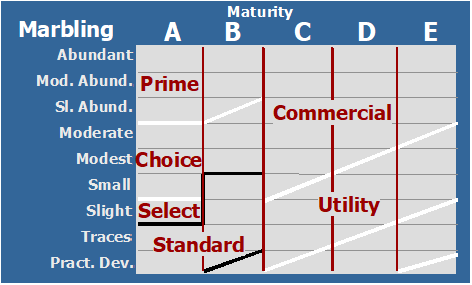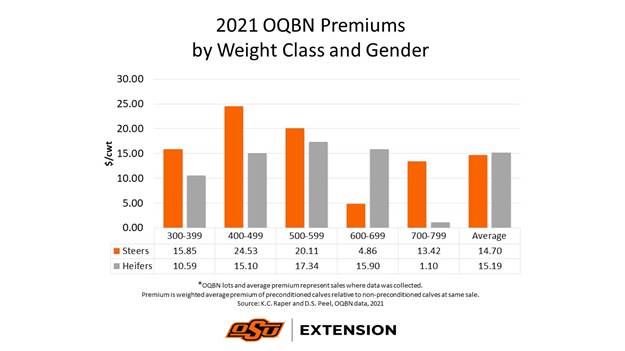Cow-Calf Corner | August 29, 2022
Oklahoma Fall Forage Situation
Derrell S. Peel, Oklahoma State University Extension Livestock Marketing Specialist
With Labor Day just around the corner, it is important to assess the current forage situation and evaluate the remaining potential of the growing season. The August 23 Drought Monitor shows that 98.64 percent of Oklahoma is in some stage of drought (D0-D4) with 48.60 percent in D3 (extreme) and D4 (exceptional) drought. The USDA-NASS Crop Progress report for that same week showed Oklahoma pasture and range conditions to be 33 percent Very Poor, 36 percent Poor, 25 percent Fair, 6 percent Good and 0 percent Excellent.
Hay supplies in Oklahoma are similarly limited. May 1 hay stocks were down 47.8 percent year over year and were down 43.5 percent from the ten-year average (2012-2021). Total hay production in 2022 is estimated to be down 10.1 percent year over year and down 17.1 percent from the ten-year average. Other (non-alfalfa) hay makes up over 86 percent of Oklahoma hay production on average and is the primary hay for beef cattle production. Other hay production is projected to be down 14.7 percent year over year and down 19.3 percent from the ten-year average. The total hay supply for the 2022-2023 hay crop year (May-April) is the sum of May 1 hay stocks and 2022 hay production. The total Oklahoma hay supply is projected to be down 17.2 percent from last year and down 21.7 percent from the 2012-2021 average. It will be the smallest total hay supply in the state since 2012.
Scattered rain has fallen in some parts of Oklahoma recently. This may provide a bit of additional pasture growth but is unlikely to produce much additional hay. Recent rain and any additional that might arrive soon may still be in time to help warm-season introduced and native grasses with some additional growth. Going forward, additional moisture will likely be most beneficial to cool-season forages.
The question of wheat pasture potential is always important in the southern plains this time of year. Wheat planted for forage only or dual-purpose grazing and grain is typically planted in September. A few places in the state may have sufficient topsoil moisture from recent rains to think about planting wheat soon but soil moisture does not extend very deep in the majority of the state. Prompt and timely rain will be needed for fall wheat forage production.
If wheat pasture does become available, it may be used somewhat differently than usual this fall and winter. Given the limited hay supply, proportionally more wheat pasture is likely to be used for cow herds than for stocker production. Even if there is wheat pasture, stocker demand may be somewhat lighter than usual this year. However, the fall run of calves may also be smaller than usual. In the past seven weeks, the Oklahoma combined auction total for feeder cattle has been up 13.6 percent year over year as feeder cattle have been marketed earlier than usual. Additionally, the auction volume of cull cows has been up 108.1 percent year over year in the same period as producers continue to adjust cow herds to match the limited forage supplies available for fall and winter.
Retained Ownership? – Part 3
Beef Quality Grades
Mark Z. Johnson, Oklahoma State University Extension Beef Cattle Breeding Specialist
United States Department of Agriculture (USDA) Beef Quality Grades assigned to beef carcasses indicate the tenderness, juiciness and flavor of cooked beef. Beef Quality Grades are based on: 1) the degree of marbling a USDA grader finds in the ribeye muscle of a ribbed carcass between the 12th and 13th ribs, and 2) the maturity of the carcass. The “A” Maturity designation means that a hanging beef carcass shows a degree of maturity between 9 – 30 months of age. Accordingly, if you send lighter calves or long yearlings to the feed yard, after the typical finishing phase of at least 150 days of a high energy, corn-based ration fed ad lib, they should yield an A maturity carcass. Because of this, marbling score is the primary factor determining Quality Grades in A maturity beef carcasses. In conventional beef production, cattle are fed for an amount of time to reach a compositional endpoint with the objective of tapping their full genetic potential to grow and develop marbling. Marbling is one type of fat we find in the carcass (external fat, seam fat and kidney heart and pelvic fat (KPH) will be discussed next week when we cover Beef Yield Grades). Marbling is commonly referred to as intramuscular fat because of where it is found within the ribeye muscle. As such, marbling can’t be seen in live animals. Therefore, the compositional endpoint to which cattle are fed is based on external finish. Because of its location in the beef carcass, marbling has more influence on tenderness, juiciness and flavor of cooked beef than the other types of fat. As a result, marbling and Beef Quality Grades are typically the biggest driver of beef carcass value. From highest to lowest, the four Quality grades that exist for A maturity beef carcasses are: Prime, Choice, Select and Standard.
The chart below shows how marbling scores down the left hand column relate to Beef Quality Grades. Three marbling scores are shown beside the Prime and Choice Quality Grades permitting the Grades to be split into thirds. For example, Moderate and Modest Marbling scores are connected to the upper 2/3rds of the Choice Grade which is a specification threshold for carcasses to be certified for quality based premium branded programs like Certified Angus Beef (CAB). As well, when beef carcasses fall into the B, C, D, and E maturity groups, lower Quality Grades are assigned and there is no longer potential for the best Quality Grades.
Beyond marbling and maturity looked at in the carcass, the amount of time on feed and the genetic potential and breed type of beef cattle plays a big role in Quality Grades achieved. Marbling is one of the later maturing fat types to develop. A wide range of genetic propensity to grow and develop marbling relative to other types of fat exists within and between different beef breeds.
Capturing More of Your Calves’ Value with Preconditioning
Paul Beck, Oklahoma State University State Beef Cattle Nutrition Specialist
Why should buyers at cattle auctions pay $10 to 15/cwt premiums for the best cattle that have received the best management, if they can get the same thing at commodity prices?
Kellie Raper and Derrell Peel have been comparing prices of preconditioned (uncertified), certified preconditioned, and un-preconditioned calves at Oklahoma livestock auctions for several years. The results from 2021 showed calves in the Oklahoma Quality Beef Network, a certified preconditioning program supported by the Oklahoma Cooperative Extension Service and Oklahoma Cattleman’s Association, had average premiums of $14.70/cwt for steers and $15.19/cwt for heifers. Premiums were as high as $24.53/cwt for 4-weight steers, but even 7-weight steers received average premiums of $13.42/cwt. Often calves in these certified preconditioning programs bring substantial premiums ($5 to 15/cwt) over calves that are preconditioned without certification, this is because cattle announced to ‘have all their shots’ are an unknown commodity unless the seller’s reputation is known by buyers.
Our customers (stocker operators and feedlots) want matched sets of calves that are weaned, castrated, dehorned, familiar with water and feed sources and able to resist disease challenges. Calves need to have a sound, balanced nutritional program and be free from internal parasites in order to have an immune system fit enough to withstand the marketing and transportation channels of our beef production system.
Preconditioning calves before marketing reduces shrink because the stress of separation from the dam has already occurred and calves are familiarized with handling and feed and water sources. Weaning is stressful and calves are often unfamiliar with water and feed locations, so may refuse to eat or drink even when feed and water are offered. Un-weaned bawling calves transported directly to the auction market will have massive weight losses through the marketing channels with shrinks often reaching 10 to 15%, opening increased risk to succumbing to disease. Preconditioned calves shrink much less when handled properly, we have commonly seen shrinkage of only 2 to 5% in preconditioned calves.
Buyers are seeing the benefits of preconditioning. Research comparing receiving performance and health of preconditioned calves versus commodity calves purchased from an auction market showed preconditioned calves gained more and were heavier than auction market calves at the end of the receiving period. Preconditioning decreased bovine respiratory disease by 90% and antibiotic costs of un-preconditioned auction market was increased 8-fold.
The Oklahoma Quality Beef Network (OQBN) Vac-45 program is one example. The OQBN Vac-45 program requires:
- The calves must be weaned for 45 days or longer.
- The calves must be ranch raised (not purchased and put together).
- Bull calves must be castrated and healed.
- Calves must be dehorned and healed.
- Calves must be identified with OQBN ear tag.
- Calves must have been vaccinated in accordance with preset protocols


